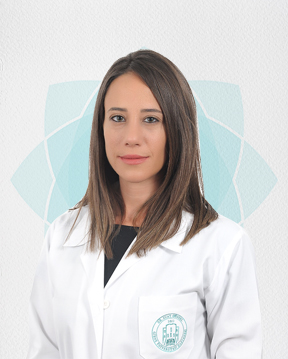
Dr. Suat Gunsel University of Kyrenia Pediatrician Nermin Ankay stated that in 2011, 21st of March was officially declared as World Down Syndrome Day because the date refers to the third 21st chromosome in Down syndrome and underlined that Down syndrome is not a treatable disease, it is a genetic problem. Dr. Nermin Ankay said that; humans usually have 23 chromosomes from their mother and 23 from their father, a total of 46, whereas in the case of a Down syndrome, there is an extra chromosome on the chromosome 21 pair, giving the person a total of 47 chromosomes.
Dr. Suat Gunsel University of Kyrenia Hospital Pediatrician Nermin Ankay in her statement on 21st of March World Down Syndrome Day underlined that Down syndrome which is one of the most common genetic defects affecting approximately one in about 800 babies and affects nearly six million people worldwide.
FACTS ABOUT DOWN SYNDROME
Dr. Nermin Ankay stated that; “children with down syndrome share some common physical characteristics. They are easily recognized by their small and round face, flat nasal bridge, slanted eyes and small and low-set ears. They have one horizontal line in their palms, a curved little finger, wide space between the first and second toes and a wide neck.’’
She added that: “People with down syndrome are generally short. They tend to gain more weight, possibly from a slower metabolism and they grow less than usual. Mostly they learn more slowly. They rarely have severe mental retardation but often have mild or moderate mental retardation, however the development of a child does not only depend on genetic traits. Environmental factors and education also affect child’s development. Appropriate early childhood education can help them to have a normal life. With the support of physical therapy, special education and language therapy they can learn simple job skills and how to live on their own.
New-borns have a harder time sucking efficiently; they have muscle weakness and often neonatal jaundice. They are more likely to have heart defects. For this reason echocardiography should be obtained in all children with Down syndrome. Additionally they may face problems such as; visual impairment, hearing loss, thyroid and gastrointestinal problems, chronic ear infections and obstructive sleep apnea.
Needs of children with Down syndrome are the same as for every children, It is very important that children with Down syndrome grow up in a social environment full of love as much as possible.
CAN DOWN SYNDROME BE DETECTED BEFORE BIRTH?
Down syndrome is a genetic problem that can be detected during pregnancy. Down syndrome can be diagnosed by a double test of 11-14 weeks, a triple test of 16-10 weeks and ultrasonography. In some cases if a risk for Down syndrome is suspected further tests can be performed.
WHO IS UNDER RISK?
Although there are different factors that cause Down syndrome the age of the mother has been the only factor linked to Down’s syndrome in the general population.
Those getting pregnant after the age of 35, those who have given birth to a baby with Down syndrome, those who have a high result from their double and triple scan tests, and those that have a close relative who has given birth to a baby with Down syndrome are under a higher risk.
FOLLOW UP AND TREATMENT
There is no cure for Down syndrome but early interventions such as special education, language therapy and physiotherapy can have very positive impact on their development.
Children with Down syndrome have common medical problems. Regular follow up is crucial for early intervention.
Medical care, regular follow-up and special education can prepare children with Down syndrome for independent living and help them to achieve success.
It is very important that children with Down syndrome grow up in a social environment as much as possible. They do not differ from other children, they have similar needs. They like to spend time with their parents, brothers and sisters, discovering their environment and playing.